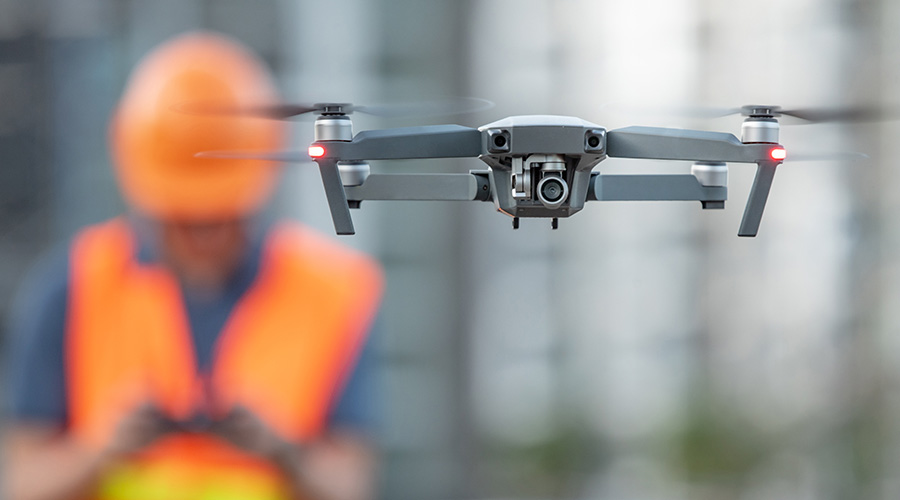TLC: The Recipe for Success?
OTHER PARTS OF THIS ARTICLEPt. 1: This Page
Traditionally, the maintenance and engineering management profession has been associated with replacing like with like and fixing something only when it breaks. Facility executives, building occupants and even the general public rarely perceive the profession as a source of innovation. The design phase generally gets credit for much of a facility's technological innovation.
But true innovation rarely follows a formalized approach. Instead, it is usually a one-time activity that replaces the old system or component with the newest and greatest product that has prettier bells and louder whistles.
Here is the challenge for maintenance and engineering managers: Innovations in building technology often fail to achieve the desired results or performances, according to several studies on the subject. Such poor results are due primarily to the lack of ability and knowledge of the facilities maintenance personnel.
In recent years, institutional and commercial facilities have seen tremendous innovations in technology and equipment. Consider the numerous improvements made in boilers, chillers, advanced HVAC control systems, sophisticated lighting controls, condition monitoring, and even remote monitoring.
It is no wonder most facility improvements are not able to deliver the desired results promised by designers and envisioned by facilities executives. The systems that front-line maintenance technicians must deal with regularly have become so much more complicated.
I suggest we reverse this trend of disappointing results and show our facility maintenance group a little TLC. I am not suggesting TLC in the typical sense of exchanging hugs with our maintenance staff. But I do propose giving them time, labor, and control to achieve the desired outcomes related to these technological innovations.
Time
The most important time for a new employee is the first 48 hours. These first few hours go a long way in laying the foundation for the rest of their employment with the organization. Think about your first day on the new job. Did it go something like this:
Show up at 8 a.m., and sit in the lobby until somebody comes to get you. Then walk around the facility with new your boss and meet 34 new faces. Next, check out your new office or desk, and be told that if you need anything, your new boss will be right down the hall.
In this scenario, a new employee has likely been set up to fail. They will spend several weeks or even months trying to figure out their responsibilities all on their own. Along the way, they are likely to be asking themselves if they've made a mistake.
The same scenario applies to new equipment when it arrives and is installed by contractors. Often, nobody from the maintenance staff was included in the design, installment, or start-up processes. Still, they receive the keys and the owner's manual, and instructions to maintain it. We've set up the maintenance staff to fail.
In this scenario, the element of time I'm talking about is the time needed to train on the equipment. There are two types of training: awareness and skills training. Awareness training doesn't do anybody any good here.
Providing enough time to go through the necessary skills training on equipment will pay dividends to the organizations for years, and it will enable organizations to realistically achieve the expected performance of the new equipment. But time also is relevant to properly maintaining equipment, as well. Facility maintenance must be allowed the time to properly fix equipment, not just work on it.
Labor
Facilities leaders and participants report a serious lack of resources in the market. Major media outlets of all kinds have run stories on the growing trend of limited human resources in the marketplace. A real need exists among maintenance and engineering departments to find workers, regardless of age or skill level.
Facility maintenance needs to build its appeal. With technological innovations and a renewed interest in green facilities, managers might have the hooks they need to improve the profession's image among younger, tech-savvy workers. This generation of iPad and Facebook users can have a profound positive impact on any organization.
Control
Control can mean several different things in this context, such as labor and cost control or condition monitoring using predictive or preventive maintenance programs. With any new innovation, control is essential.
But again, most organizations fail to achieve the desired performance of a recently installed piece of equipment, and this situation is related directly to the lack of control within maintenance and engineering departments.
Control can start by establishing baseline performance requirements, monitoring that performance, and reacting correctly to any deviation. Managers need to develop policies and procedures, workers need to adhere to maintenance strategies, and properly trained technicians need to capture all activities on work orders.
Finally, managers can identify where labor hours and dollars are spent and take advantage of innovations to eliminate those costs.
Changes in facilities are creating new opportunities. Managers can take advantage of advances in technology, the efficiency improvements these advances bring, and the possibilities of improving the sustainability of facilities. By using a little TLC, they can bring it all together for the benefit of the department and the organization.
Andrew Gager, CPIM, CMRP, is a principal consultant with Life Cycle Engineering. He has more than 28 years of experience, ranging from warehousing operations to plant manager. Specializing in materials management, change management, and optimizing operations, Gager has led multiple improvement initiatives that include Kaizen events, strategic-sourcing programs, and successful reconfiguration of warehousing operations.
Agree? Disagree? Have something to say? We want to hear from you. Visit myfacilitiesnet.com/AndyGager.
Related Topics:











